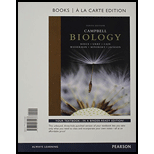
Lacking tissues and organs, how do soonges accomplish tasks such as gas exchange, nutrient transport, and waste disposa I?
To determine: How sponges perform “gas exchange, nutrient transport, and waste disposal” without tissues and organs.
Introduction: All sponges belong to the phylum Porifera. They are the simplest animals with the cellular level of organization. They have diverged forms than other animals early in evolution. Most of the body parts of sponges are asymmetrical. Sponges consist of pores in their body called ostia.
Explanation of Solution
The sponges have a relatively simple body plan with all cells of the body in direct contact with water. This allows excretion and exchange of gases to occur through diffusion. The sponges are filter feeders and contain choanocytes (collar cells) that help them to get food. The beating of flagella of choanocyte draws food particles along with water. The food particles stick to collar-like projections of the choanocytes. The food particles are then phagocytized and are either digested or passed on to the other cells called amoebocytes. These amoebocyte cells then transfer it to other cells of the body.
Want to see more full solutions like this?
Chapter 33 Solutions
Campbell Biology, Books a la Carte Edition & Modified Mastering Biology with Pearson eText -- ValuePack Access Card -- for Campbell Biology
- The rhynchocoel is a ________. a. circulatory system b. fluid-filled cavity c. primitive excretory system d. proboscisarrow_forwardWhat part do Balanus use to maintain its position in its natural environment? a. Podia b. Suckers c. Pedal disk d. Cement glandarrow_forwardWhat type of a body plan doescoelenterates, ctenophores andechinoderms have?A. Annelida B. RadialC. Bilateral D. Platyhelminthesarrow_forward
- Nematodes and arthropods both (develop an anus from the blastopore formed during gastrulation/suspension feeders/grow by shedding their exoskeleton/have ciliated larva)?arrow_forwardDo ctenophorans reproduce by shedding sperm into water?arrow_forwardFlatworms (platyhelminthes) possess a a. metanephridial system b. protonephridial system c. secretion kidney d. none of thesearrow_forward
- What are zoospores?arrow_forwardIn arthropods, the tracheal system isa. a unique set of structures that function in ingestion and digestion offood.b. a series of branching tubes extending into the body that allow for gasexchange.c. a series of tubules that allow waste products in the blood to bereleased into the digestive tract.d. the series of ommatidia that form the compound eye.e. none of the above.arrow_forwardDo tapeworms have a complicated digestive system? Can they be transferred through undercooked red meat?arrow_forward
 Biology 2eBiologyISBN:9781947172517Author:Matthew Douglas, Jung Choi, Mary Ann ClarkPublisher:OpenStax
Biology 2eBiologyISBN:9781947172517Author:Matthew Douglas, Jung Choi, Mary Ann ClarkPublisher:OpenStax

